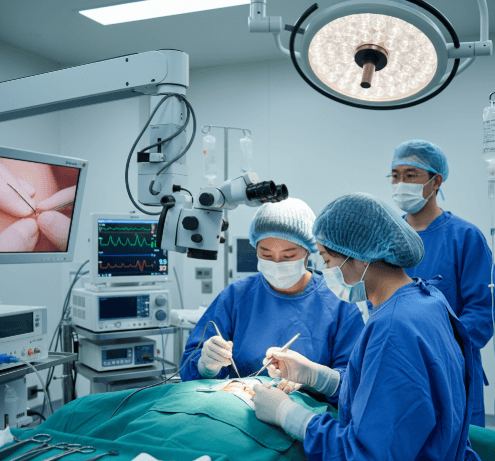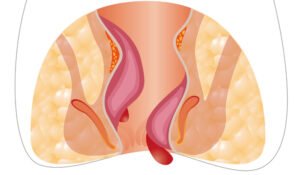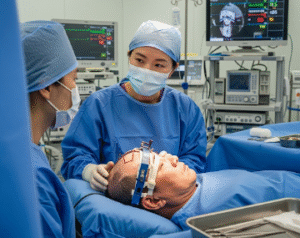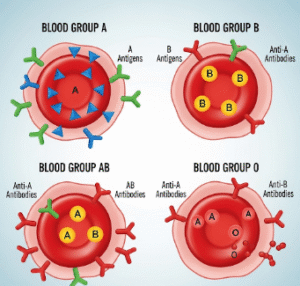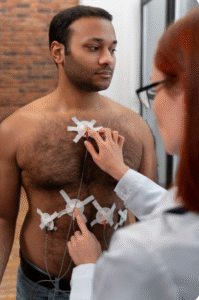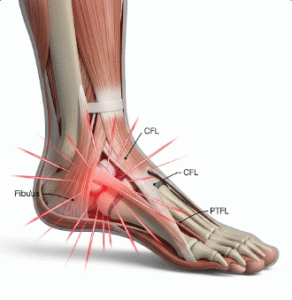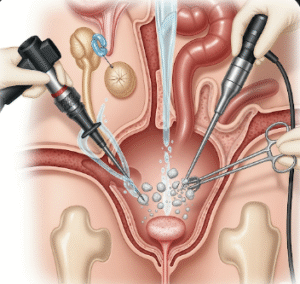What it is
Tubal ligation reversal is a surgical procedure performed to restore fertility in women who have previously undergone tubal ligation (sterilization). In this surgery, the blocked or sealed fallopian tubes are reconnected or repaired so that eggs can once again travel from the ovaries to the uterus.
✔️ Goal: To allow natural conception without assisted reproductive technologies.
✔️ Method: In Korea, this is typically done through microsurgical or laparoscopic techniques.
✔️ Success rate: Depends on age, health, and how the original ligation was performed.
➡️ The procedure is considered complex and requires a specialized gynecologic surgeon.
Why it’s done
Women in Korea may seek tubal ligation reversal for various reasons:
🔹 Desire for pregnancy after life circumstances change (new partner, decision to expand family)
🔹 Regret after sterilization
🔹 Medical reasons if sterilization caused complications (rare but possible)
🔹 Preference for natural conception rather than in-vitro fertilization (IVF)
💡 Highlight: Tubal ligation reversal provides women the chance to conceive naturally again, but it is not guaranteed for everyone.
Alternatives
Since reversal surgery is not always successful, doctors in Korea often discuss alternatives:
➡️ In-vitro fertilization (IVF) – bypasses the tubes completely
➡️ Intrauterine insemination (IUI) – less invasive, but requires open tubes
➡️ Adoption or surrogacy – depending on individual circumstances
➡️ Donor eggs with IVF – for women with age-related fertility decline
⚠️ Note: IVF may be recommended in cases where reversal has a low likelihood of success (e.g., very short tubes remaining).
Preparation
Preparation for tubal ligation reversal in Korea involves several important steps:
✔️ Comprehensive consultation – with a fertility specialist or gynecologic surgeon
✔️ Medical history review – including the original tubal ligation method
✔️ Pre-surgery imaging – hysterosalpingography (HSG) or laparoscopy to assess tubal length and condition
✔️ Blood tests – to check hormone levels and overall fertility status
✔️ Partner evaluation – semen analysis for male fertility health
✔️ Counseling – realistic discussion about success rates, risks, and alternatives
💡 Tip: Korean fertility centers often combine advanced diagnostics and counseling, giving patients a clear understanding before surgery.
How it’s done
The tubal ligation reversal procedure in Korea is performed under general anesthesia and may take 2–3 hours.
Steps include:
- Anesthesia administration → Patient is fully asleep.
- Small incisions → Laparoscopic or microsurgical approach with tiny cuts in the abdomen.
- Examination of fallopian tubes → Surgeon checks remaining tube length and condition.
- Reconnection → Using microsurgical sutures, the surgeon reconnects healthy segments of the tubes.
- Testing → Dye or fluid is used to confirm tubal patency (openness).
- Closure → Small incisions are closed with stitches.
⏩ The use of microsurgical and laparoscopic methods in Korea minimizes scarring, speeds recovery, and improves outcomes.
Recovery
Recovery after tubal ligation reversal is usually longer than insertion but manageable:
✔️ Hospital stay – often 1–2 days in Korea
✔️ Mild pain or bloating for a few days
✔️ Return to light activities in 1 week
✔️ Full recovery in 2–4 weeks, depending on health
✔️ Doctors usually recommend waiting 2–3 months before trying to conceive
When to seek medical attention:
➡️ Fever or infection signs at incision site
➡️ Severe abdominal pain
➡️ Heavy vaginal bleeding
➡️ Difficulty breathing after surgery
💡 Important: Korean clinics emphasize follow-up care and fertility monitoring after the surgery to increase pregnancy chances.
Treatment option in Korea
Korea has advanced fertility and gynecological centers that provide tubal ligation reversal:
⭐ Specialized microsurgeons trained in fertility restoration
⭐ Modern laparoscopic and microsurgical technology
⭐ High success rates in younger women and those with sufficient tubal length
⭐ Affordable costs compared to many Western countries
⭐ Integrated fertility care – reversal surgery can be combined with IVF if needed
💡 Highlight: Korea is an excellent choice for women seeking professional, advanced, and affordable fertility surgery.
Key Highlights
✔️ Tubal ligation reversal restores fertility by reconnecting fallopian tubes
✔️ Microsurgical and laparoscopic methods used in Korea for precision and safety
✔️ Success depends on age, health, and tubal length
✔️ Recovery takes 2–4 weeks, with careful follow-up recommended
✔️ Korean fertility clinics offer modern care, advanced diagnostics, and skilled surgeons

